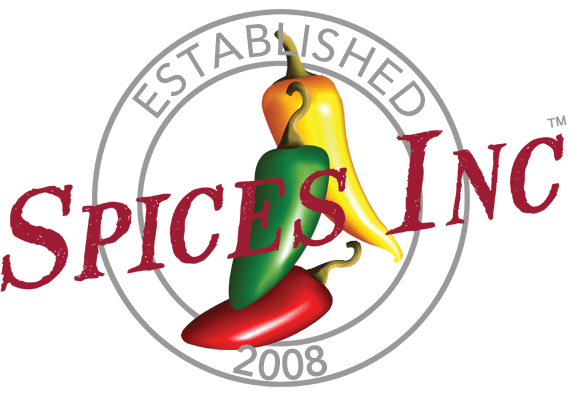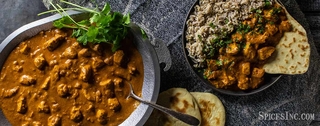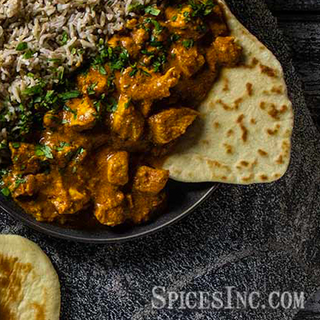Kashmiri Chile Powder
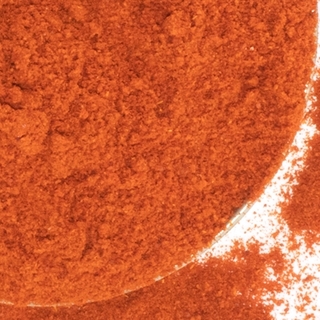
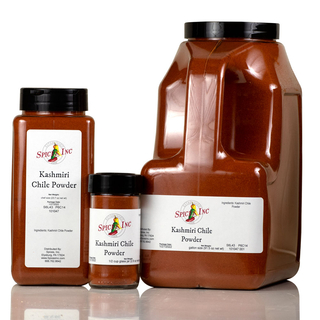


Kashmiri Chile Powder
Kashmiri Chile Powder, Capsicum annuum, is a vibrant red powder that measures 1,000-2,000 Scoville Heat Units (SHU). It is also known as Kashmiri red chile powder, Kashmiri chili powder, Kashmiri powder, Kashmiri mirch, or Kashmiri laal mirch.
This is a vibrant red powder made from dehydrated, ground Kashmiri chiles. It gives bold color and sweet, fruity flavor to dishes, rather than heat.
Kashmiri Chile Powder is regularly purchased by independent spice shops; brewpubs; coffee shops; BBQ, American, Indian restaurants; snack, pasta, and ramen manufacturers; seasoning companies; and breweries.
Flavor Profile
Kashmiri Chile Powder is sweet and fruity, with a very mild heat.
Heat Level
Kashmiri Chile Powder is a mild chile, measuring 1,000-2,000 Scoville Heat Units (SHU).
How To Use
Kashmiri Chile Powder is a standard Indian spice, used to create rich color rather than heat. It brings gentle flavor to rich Butter Chicken. It helps create the distinctive red color of Tandoori Chicken when it’s mixed into the marinade. Use this versatile ingredient instead of paprika when making a DIY Dry Rib Rub. Toss over chickpeas and roast for bright red chana, stir into homemade Falafel for just a bit of a kick, or stir into Mango Chutney for a touch of contrast.
Kashmiri Chile Powder is great to use when making curries, soups, stews, marinades, DIY seasoning blends, spice rubs, dressings, condiments, roasted meats, legumes, and snacks.
Kashmiri Chile Powder pairs well with garlic, onion, tamarind, lemongrass, black pepper, galangal, cinnamon, ginger, peanuts, sesame, coriander, and cardamom.
| Also Called | Kashmiri red chile powder, Kashmiri chili powder, Kashmiri powder, Kashmiri mirch, or Kashmiri laal mirch |
| Species | Capsicum annuum |
| Ingredients | Ground, dehydrated Kashmiri chile |
| Flavor Profile | Sweet, fruity, mild heat |
| Scoville Heat Units | 1,000-2,000 SHU |
| Recommended Uses | Curries, soups, stews, marinades, DIY seasoning blends, spice rubs, dressings, condiments, roasted meats, legumes, snacks |
| Cuisine | Indian |
| How To Store | Airtight container in a cool, dark place |
| Shelf Life | 6-12 months |
| Country of Origin | India |
Nutrition Facts
Serving Size1 tsp
Amount Per Serving
Calories9
% Daily Value*
Total Fat0g0%
Saturated Fat0g0%
Trans Fat0g
Polyunsaturated Fat0g
Monounsaturated Fat0g
Cholesterol0mg0%
Sodium2.5mg0%
Total Carbohydrate2.0g1%
Dietary Fiber0.8g3%
Total Sugars1.1g
Added Sugars0g0%
Sugar Alcohol0.0g
Protein0.3g0%
Vitamin D0mcg0%
Calcium1mg0%
Iron0mg1%
Potassium52mg1%
*The % Daily Value (DV) tells you how much a nutrient in a serving of food contributes to a daily diet. 2,000 calories a day is used for general nutrition advice. These values were calculated and therefore are approximate. For more accuracy, testing is advised.
